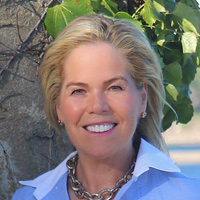Glass-Half-Empty Retirement Outlook? Here’s Some Advice
Three financial advisers who specialize in retirement income planning offer some guidance aimed at trying to ease the concerns of soon-to-be retirees.


Americans nearing retirement worry they’ll never be able to stop working. It’s a headline we’ve seen repeatedly over the last three decades. Notably, the sense of pessimism today is at its highest point in 10 years. According to a recent Gallup survey, nearly 60% of non-retirees don’t think they will have enough money for a comfortable retirement.
Blame inflation, higher interest rates and the possibility of a looming recession for at least some of this anxiety. Even the anticipation of a dismal economic forecast can concern retirement savers whose investment portfolios rely heavily on stock returns, especially for those trying to retire within the next decade.
How do those with a glass-half-empty view of retirement manage their expectations and investments?

Sign up for Kiplinger’s Free E-Newsletters
Profit and prosper with the best of expert advice on investing, taxes, retirement, personal finance and more - straight to your e-mail.
Profit and prosper with the best of expert advice - straight to your e-mail.
Even if you can’t change your financial outlook, there are concrete steps you can take right now to boost your retirement confidence. I spoke with three top fiduciary financial advisers who specialize in retirement income planning. Here’s how they position their soon-to-be retiree clients to help ease their concerns.
Hyper-personalized planning and cash-flow ‘stress testing’
People of all ages worry about retirement due to uncertainty. Older workers, with a shorter time horizon, have more at stake and less time to course-correct. But even midcareer workers saving aggressively for the future can feel anxious about rising tax rates, Social Security's solvency and stock market performance.
To combat these uncertainties, fiduciary financial advisers, including Jessica Searcy, CEO and president at Searcy Financial Services, recommend creating a hyper-personalized retirement plan that delves into every worst-case-scenario aspect of your financial future. This comprehensive approach includes projections that assess your potential income, expenses and the impact of different scenarios or economic stressors to evaluate your retirement readiness.
“We are often able to allay these fears by projecting the future anticipated cost of retirement and looking at the probability of success,” Searcy says. “When the probability of success is too low for comfort, then we can focus on finding creative ways to solve the problem.”
For instance, consider how the fear of rising health care costs can be a threat to a future retiree's financial security. Some solutions may involve funding a health savings account (HSA), which is similar to having a tax-advantaged IRA account specifically for medical expenses; exploring nontraditional coverage options; or even considering an early retirement abroad that might allow you to leverage another country's health care system before Medicare kicks in.
In today's volatile markets and uncertain economic climate, financial advisers are increasingly advocating for stress testing, which illustrates clients’ worst-case scenarios to provide an understanding of their preparedness. Tyler Moore, CPA/PFS, CFP® at Timberchase Financial in Alabama, emphasizes, “We are doing more stress testing and what-if scenarios, such as higher inflation or a market downturn when reviewing financial plans and projections side-by-side with clients.”
Therefore, the first step for those who feel unprepared is to start planning. Astonishingly, there is a significant disparity between the number of individuals who acknowledge the importance of retirement planning and those who actually take action, as revealed by a study conducted by AARP. This research underscores the need for employers to provide access to personalized financial advice to their workforce. Moreover, individuals nearing retirement should strongly consider seeking one-on-one, personalized advice from an unbiased fiduciary fee-only adviser.
Those soon to retire still need their portfolios to grow
As you approach and transition into retirement, a common rule of thumb advises adopting a more conservative investment strategy to safeguard your hard-earned assets. Preserving capital becomes a priority, but it's crucial to recognize that playing it too safe carries its own set of risks, especially when your portfolio needs to generate income to sustain your desired retirement lifestyle.
Marc Lieberman is a Chartered Financial Analyst and personal financial adviser based in Tiburon, Calif. He stresses the importance of this concept especially for those in their 50s and beyond, stating, “The average person will spend 30 years in retirement. It is important to remember that one does not simply stop investing during their retirement years.”
Over the past two years, it has become essential to look for growth opportunities that help counter the effect of inflation. “All this means is that your ‘bogey’ for required returns during retirement has likely gone up,” Lieberman says. “While some of those higher required returns can be met with higher yields on cash and bonds, stocks will likely remain an important third leg of your retirement investing strategy.”
How much of your portfolio should be in stocks will depend on different factors, not the least of which is your own comfort level and the quality of stocks you want to own. For example, dividend-paying stocks that have solid balance sheets can be a reliable growth strategy to help boost returns. Collaborating with an adviser can help you personalize your own asset allocation so that it aligns with your timing, your cash spending needs and your level of comfort around the idea that some of your money can be invested for growth.
Avoid unnecessary short-term mistakes
During my conversations with financial advisers, a consistent piece of advice emerged: As you approach the retirement finish line, the last thing you want to do is make avoidable mistakes in reaction to short-term trends.
Recently, we've witnessed a whirlwind of events — high inflation, soaring interest rates, simultaneous drops in bonds and stocks, a potential federal debt default and even a banking crisis. It's easy to get swept up in the excitement or succumb to the doom and gloom of the moment. However, it's crucial to recognize that the markets and economic cycles are in constant motion.
“We’ve discussed historical returns and economic conditions more frequently to remind clients that we have seen many of these things before and that we need to take a long-term view, not a short-term view,” Moore says.
That generally involves the challenge of resisting our emotions. “Remember, the stock market takes the escalator up and the elevator down,” Lieberman says. “Humans don’t like acceleration, which is why the down markets ‘feel’ so much worse than the up markets feel good. It is important to consider that the stock markets go up about two-thirds of the time and down one-third of the time.”
However, maintaining a long-term perspective doesn't mean sitting idly. There are still opportunities to be proactive and make strategic moves.
“For clients who we were already considering moving to a more conservative allocation in the near future because of their specific circumstances, we have considered accelerating this to take advantage of the depressed bond prices and high interest rates,” Moore says.
Take a break from big financial news of the day
What about those who are chronically worried about the future? Although it may seem counterintuitive, a way to boost your retirement confidence is to shift your focus away from the big financial news events of the day.
“Most people have concerns about things they can’t control — inflation, taxes, health care,” Searcy says. “By staying focused on the things that can be controlled, like savings rates, savings methods and spending, we can typically get to successful outcomes.”
These three advisers agree that the best course of action is to develop a solid cash-flow plan and a sound investment strategy and then stay the course, making minor adjustments along the way.
related content
Get Kiplinger Today newsletter — free
Profit and prosper with the best of Kiplinger's advice on investing, taxes, retirement, personal finance and much more. Delivered daily. Enter your email in the box and click Sign Me Up.

With more than 25 years in investor advocacy, Pam Krueger is the founder and CEO of Wealthramp, an SEC-registered adviser matching platform that connects consumers with rigorously vetted and qualified fee-only financial advisers. She is also the creator and co-host of the award-winning MoneyTrack investor-education TV series, seen nationally on PBS, and Friends Talk Money podcast.
-
 Get Netflix, Hulu and Apple TV Plus for Free by Joining T-Mobile
Get Netflix, Hulu and Apple TV Plus for Free by Joining T-MobileT-Mobile customers save up to $35/month on streaming services thanks to this Netflix, Hulu and Apple TV Plus bundle. Here’s how to get it.
By Rachael Green
-
 Missed Tax Day? Nearly One Million Taxpayers Still Can File and Claim Valuable Tax Refunds
Missed Tax Day? Nearly One Million Taxpayers Still Can File and Claim Valuable Tax RefundsTax Refunds Some folks don’t file taxes simply because they don’t earn enough, but they could be missing out on a significant tax refund.
By Gabriella Cruz-Martínez
-
 Going to College? How to Navigate the Financial Planning
Going to College? How to Navigate the Financial PlanningCollege decisions this year seem even more complex than usual, including determining whether a school is a 'financial fit.' Here's how to find your way.
By Chris Ebeling
-
 Financial Steps After a Loved One's Alzheimer's Diagnosis
Financial Steps After a Loved One's Alzheimer's DiagnosisIt's important to move fast on legal safeguards, estate planning and more while your loved one still has the capacity to make decisions.
By Thomas C. West, CLU®, ChFC®, AIF®
-
 How Soon Can You Walk Away After Selling Your Business?
How Soon Can You Walk Away After Selling Your Business?You may earn more money from the sale of your business if you stay to help with the transition to new management. The question is, do you need to?
By Evan T. Beach, CFP®, AWMA®
-
 Two Don'ts and Four Dos During Trump's Trade War
Two Don'ts and Four Dos During Trump's Trade WarThe financial rules have changed now that tariffs have disrupted the markets and created economic uncertainty. What can you do? (And what shouldn't you do?)
By Maggie Kulyk, CRPC®, CSRIC™
-
 I'm Single, With No Kids: Why Do I Need an Estate Plan?
I'm Single, With No Kids: Why Do I Need an Estate Plan?Unless you have a plan in place, guess who might be making all the decisions about your prized possessions, or even your health care: a court.
By Cynthia Pruemm, Investment Adviser Representative
-
 Most Investors Aren't as Diversified as They Think: Are You?
Most Investors Aren't as Diversified as They Think: Are You?You could be facing a surprisingly dangerous amount of concentration risk without realizing it. Fixing that problem starts with knowing exactly what you own.
By Scott Noble, CPA/PFS
-
 Will My Children Inherit Too Much?
Will My Children Inherit Too Much?If you worry about how your children will handle an inheritance, you're not alone. Luckily, you have options — from lifetime gifting to trusts — that can help.
By Mallon FitzPatrick, CFP®, AEP®, CLU®
-
 Charitable Giving Lessons From Netflix's 'Apple Cider Vinegar'
Charitable Giving Lessons From Netflix's 'Apple Cider Vinegar'Charity fraud is rife, and a Netflix series provides a timely warning about donating money to a good cause without looking into its background.
By Peter J. Klein, CFA®, CAP®, CSRIC®, CRPS®